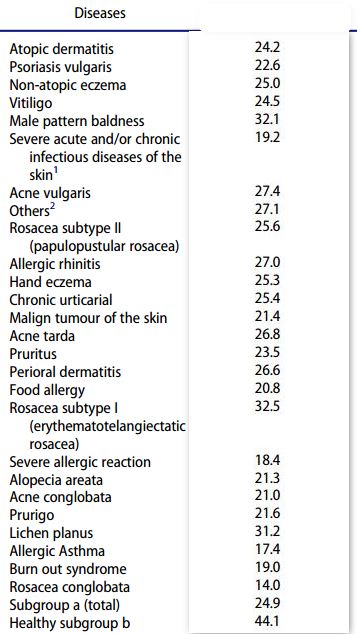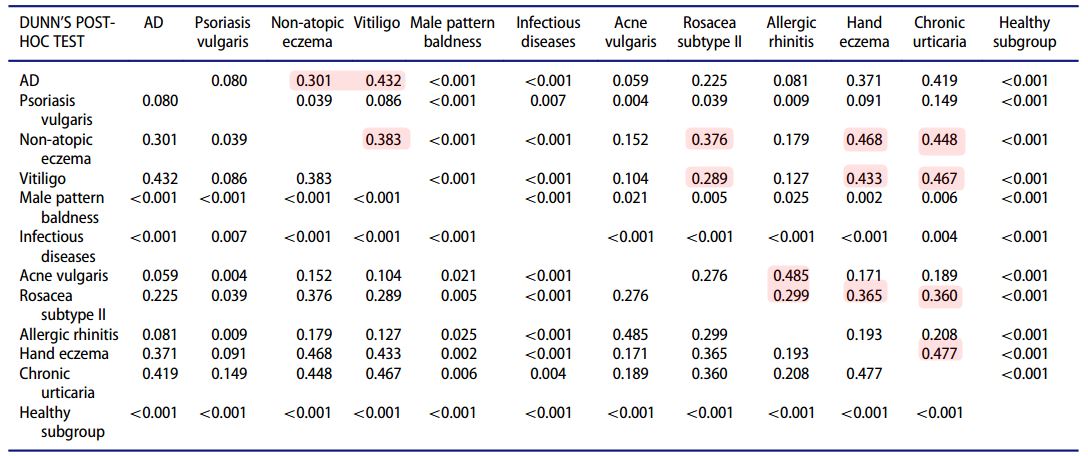Many skin problems are associated with each other and with low vitamin D
Serum 25-hydroxyvitamin D levels in patients with skin diseases including psoriasis, infections, and atopic dermatitis.
Dermatoendocrinol. 2018 Feb 22;10(1):e1442159. doi: 10.1080/19381980.2018.1442159. eCollection 2018.
Amon U1, Baier L1, Yaguboglu R1, Ennis M2, Holick MF3, Amon J1.
📄 Download the PDF from VitaminDWiki
Skin Disease: Vitamin D level (ng)

Association betweem two skin diseases: 30% = 0.3

The pathogenetic role of vitamin D as well as its clinical correlation in inflammatory skin diseases is still uncertain. This study aimed to compare serum levels of 25(OH) vitamin D (calcidiol) in outpatients suffering from different skin diseases using the same laboratory method in one study. In routine serum samples of 1,532 patients from the previous 12 months we identified retrospectively 180 (mean age 49.4 years, 80 female, 100 male) and 205 (mean age 36.3 years, 116 female, 89 male) patients with psoriasis (PSO) and atopic dermatitis (AD), respectively. Clinical disease activity and quality of life was evaluated using Physicians Global Assessment Scores (PGA), Dermatology Life Quality Index (DLQI), and a Visual Analog Scale for pruritus in AD, respectively. The median 25(OH)D serum level of all patients (22.97 ng/mL, range 2.61-96.0, n = 1,461) was significantly lower in comparison to healthy controls (41.6 ng/mL, range 16.9-77.57, p < 0.0001, n = 71). In PSO and AD we measured 21.05 ng/mL (44% < 20 ng/mL) and 22.7 ng/mL (39% < 20 ng/mL), respectively (p = 0.152).
Among all subgroups, patients with severe acute or chronic infectious skin diseases had the lowest median 25(OH)D serum levels (17.11 ng/mL, n = 94, 66% <20 ng/mL, p < 0,001 vs. AD, p = 0,007 vs. PSO). For PSO and AD there was no significant correlation between 25(OH)D levels and PGA scores and DLQI values, respectively, or the extent of pruritus in AD. 25(OH)D serum levels in inflammatory skin diseases might correlate more with the type of disease and the degree of inflammation than with clinical activity itself.
